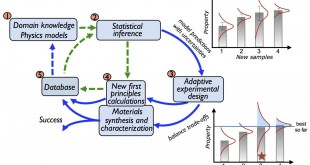The space is increasing becoming another domain of conflict due to enhanced militarization along with proliferation of counter space weapons like electronic warfare, anti-satellite weapons, and DEW weapons.
“Our space assets have come under risk, however, due to activities of adversaries to degrade, deny, or disrupt our ability to operate in space. Autonomy provides a means to build resilient networks that can reconfigure themselves in the face of such attacks, preserving essential functions under duress,” says USAF.
It also provides a mechanism for significantly reducing the extensive manpower requirements for manual control of satellites and generation of space situation awareness through real-time surveillance and analysis of the enormous number of objects in orbit around the Earth
Senior leaders and policy makers in the US government have been calling for a disaggregated National Security Space architecture in response to the rapidly changing nature of the space domain. The Air Force Space Command (AFSC) defines disaggregation as: “The dispersion of space-based missions, functions or sensors across multiple systems spanning one or more orbital plane, platform, host or domain.”
“A disaggregated system design offers a means to avoid threats, ensure survivable capabilities despite hostile action, and develop the capacity to reconstitute, recover or operate through adverse events should robustness fail. Carefully pursued, disaggregation can lead to less costly and more resilient space architectures in the face of a rapidly evolving security environment.”
“The larger numbers of satellites complicate an adversary’s decision-making calculus and increases the uncertainty of outcomes. Smaller, lower-cost satellites, built and launched on frequent schedules could also make it much easier to reconstitute space capabilities, and introduce new technologies and capabilities. New countermeasures could also be added as the corresponding threat systems are developed and fielded.”
DARPA seeking autonomous technologies for disaggregated Space architecture
The Defense Advanced Research Projects Agency is seeking information on new technologies it can use to manage the sharing of missions across large constellations of inexpensive low-earth orbit satellites for the Defense Department.
DARPA and DoD are interested in moving toward satisfying DoD space missions with large constellations of inexpensive satellites in low earth orbit (LEO). This distributed approach provides both redundancy and resiliency, as well as other benefits. However, a large constellation of satellites requires much more complex management to fully optimize their performance, especially in a dynamic or tactical environment. Current advances in autonomy and machine learning are enabling the management of multiple vehicle systems that collaborate. DARPA is interested in leveraging these advances in order to demonstrate unique military utility.
DARPA/TTO is seeking new technologies and concepts to enable highly autonomous satellites, payloads, and constellations. Areas of interest include, but are not limited to:
- Prioritization of resource-consuming elements within a satellite (e.g. multiple payloads utilizing resources such as energy, antenna access, requirements on satellite attitude that impact other payloads, etc.)
- Accomplishing a given mission shared across multiple satellites
- Networking among many satellites in multiple orbital planes with multiple comms links, multiple ground stations, and/or multiple remote (tactical) users
- Telemetry, tracking and control (TT&C) where satellites are routinely out of view of a ground station
- Autonomous “self-command” operation when ground station command link unavailable (e.g. autonomous self-determination of a RF Collection, electro-optic/infrared (EO/IR), or RADAR collection plan for the next pass when ground station is unable to provide commands, including artificial intelligence (AI) and machine learning systems).
- On-orbit data cloud and autonomous management of dynamic, distributed data storage and processing functions across multiple satellites
- Autonomous reconfiguration of satellite constellation and/or mission execution due to permanent or temporary unavailability of satellites or particular functions thereof (e.g. particular payload, particular communication link)
- Verification and validation of the autonomous system performance & robustness beyond Monte-Carlo Simulations (e.g., analysis-based techniques or compositional techniques)
- Operator interface designs for autonomous constellations allowing the flexible command and control (C2) relationships discussed above, maintaining acceptable operator decision workload regardless of operational situation, and the ability of operators to quickly re-establish situational awareness after communications loss and/or autonomous operations periods.
- Scalable approaches for the above areas that allow them to be applied to larger constellation sizes, number of simultaneous missions, communication link path diversities, etc.
- Highly capable on-orbit processors that can effectively utilize lower cost components by leveraging the more benign LEO space environment and short (e.g. three year) life requirements
- Modeling and Simulation of hundreds of autonomous DOD spacecraft in LEO that utilize mesh network connectivity between each spacecraft on the order of 0.1Mb/sec to 50Mb/sec data rates between nodes, both hardware-in-the-loop (HITL) and virtual, and mixed HITL/virtual.
- Other relevant topics as applicable
 International Defense Security & Technology Your trusted Source for News, Research and Analysis
International Defense Security & Technology Your trusted Source for News, Research and Analysis
